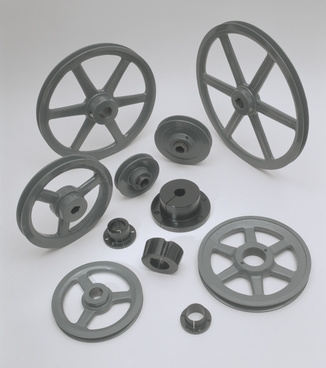
If a drive belt is burning, chafing, or breaking often, things definitely are wrong. Diagnosing the problem must be taken step by step to eliminate all factors and pinpoint the issue. By following some simple maintenance outlined by qualified professionals, you can prevent the destruction of a drive belt.
For the pulleys to be aligned, they must both run in the same plane, or have co-planar alignment. The drive belt runs in a straight line, and both pulleys must be on that line. Application Engineer Dan Parsons at the Gates Rubber Company recommends using a ruler to check alignment. Place the ruler up to the face of both pulleys. The ruler should touch the complete face of each, with no gaps. If any gaps are present, you might have to shim the offending pulley in or out to bring it to the drive belt line.
Pulleys must also have proper angular alignment. To picture this, draw a straight line with a ruler. This is the belt line. With a drafting or carpenter's square, draw two lines about three inches apart intersecting the line. The lines crossing the belt line are shafts the pulleys mount on. The shaft lines must intersect the belt line at exactly 90 degrees. Any angular misalignment in the shafts will cause the drive belt to burn or chafe. To correct this, you might have to shim the mount of the devices so the angle of the pulley shafts change. Parsons again recommends using a ruler to check shaft alignment.
If the pulleys are bent, they wobble when running. Wobbling places undue strain on the belt, causing it to burn. First, visually inspect the pulleys while running to check wobbling. If they wobble, replace the pulleys with new ones. A pulley's wobble might be so little that visual inspections alone will not reveal it. The only real way to check a pulley is remove it and test on a base. Use measuring instruments such as dial indicators to check for run-out.
All of the problems (angular, co-planar and bent pulley) might be present at the same time, compounding the reasons a belt burns. If so, each problem must be corrected individually. To correctly diagnose a problem, take each test procedure one step at a time. First, check for a bent pulley while running. If the pulley is good, check for angular alignment. If its good, check for co-planar alignment.